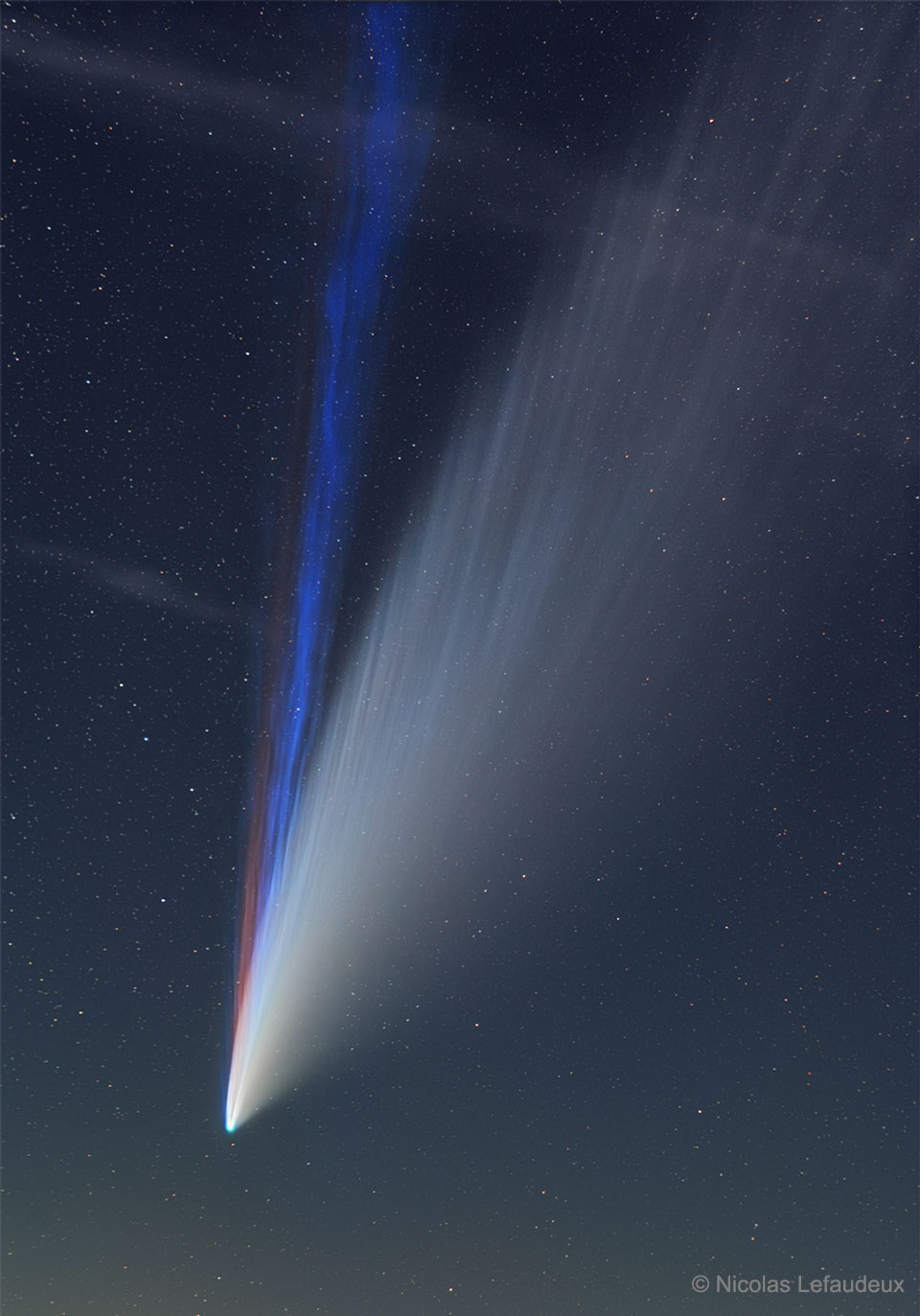2021年03月08日
Three Tails of Comet NEOWISE
Image Credit & Copyright: Nicolas Lefaudeux
Explanation: What created the unusual red tail in Comet NEOWISE? Sodium. A spectacular sight back in the summer of 2020, Comet NEOWISE, at times, displayed something more than just a surprisingly striated white dust tail and a pleasingly patchy blue ion tail. Some color sensitive images showed an unusual red tail, and analysis showed much of this third tail’s color was emitted by sodium. Gas rich in sodium atoms might have been liberated from Comet NEOWISE’s warming nucleus in early July by bright sunlight, electrically charged by ultraviolet sunlight, and then pushed out by the solar wind. The featured image was captured in mid-July from Brittany, France and shows the real colors. Sodium comet tails have been seen before but are rare — this one disappeared by late July. Comet C/2020 F3 (NEOWISE) has since faded, lost all of its bright tails, and now approaches the orbit of Jupiter as it heads back to the outer Solar System, to return only in about 7,000 years.
Astrophysicists: Browse 2,400+ codes in the Astrophysics Source Code Library
Tomorrow’s picture: mars 360
新智彗星的彗尾
影像提供与版权: Nicolas Lefaudeux
说明: 新智彗星不寻常的红彗尾是什么造成的?钠。2020年夏天非常壮观的新智彗星,除了有带横纹的泛白尘尾和美丽泛蓝的离子尾之外,还有其他奇观。一些对色彩较灵敏的影像,证实它有不寻常的泛红彗尾,而分析更指出钠辐射是第三道彗尾色泽的主要贡献者。在去年7月初,因明亮阳光照耀而升温的彗核,可能释出富含钠原子的气体,然后受到紫外阳光的电离,被太阳风推送出去。这幅呈现真实色彩的主题影像,是在2020年的7月中,摄于法国的布列塔尼大区。彗星钠尾先前就有观测记录不过相当罕见,影像中的这道在7月底就消失。新智彗星(C/2020 F3 NEOWISE) 自拍照后就日渐变暗,失去它所有的明亮彗尾。在返回太阳系外围的旅程中,它目前接近木星的轨道,大约在7,000年后才会重返。
天体物理学家:在天体物理学源代码库中浏览2,400多种代码
明日的图片: mars 360



